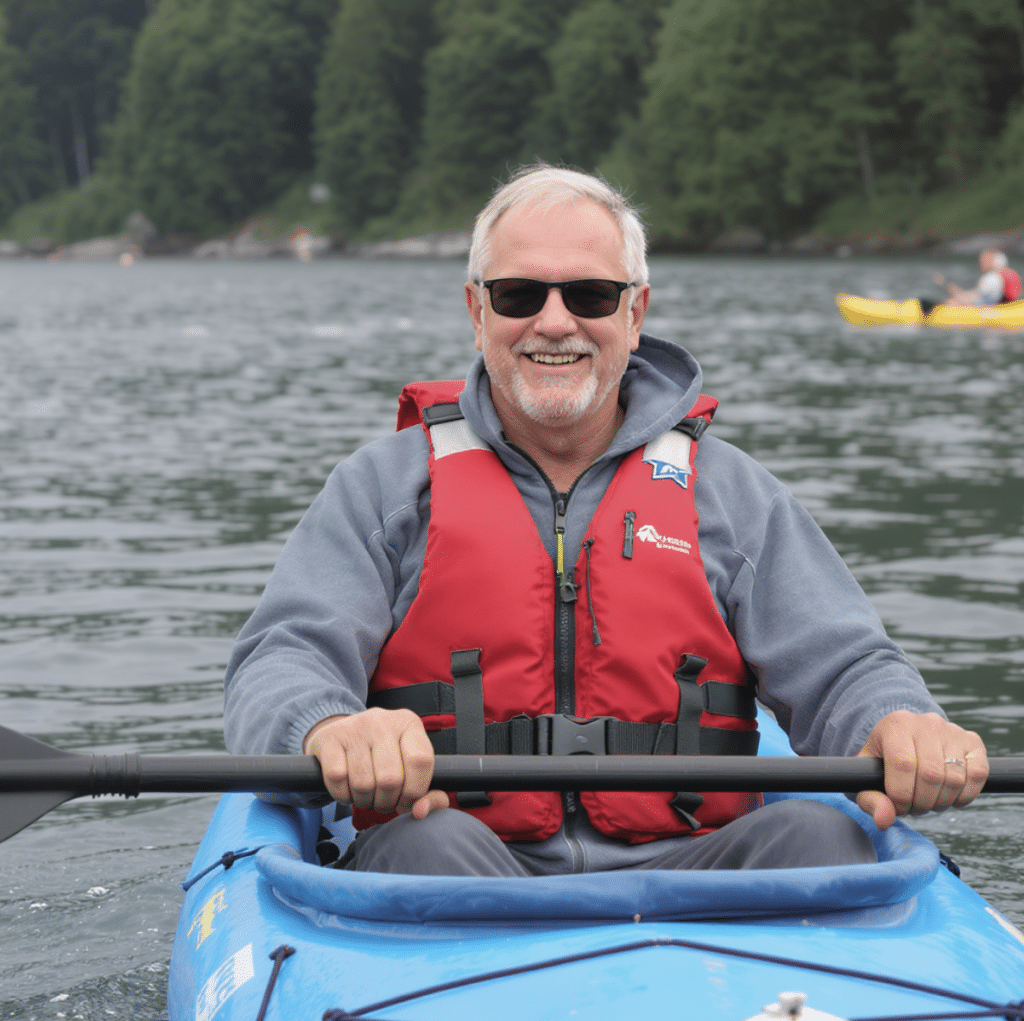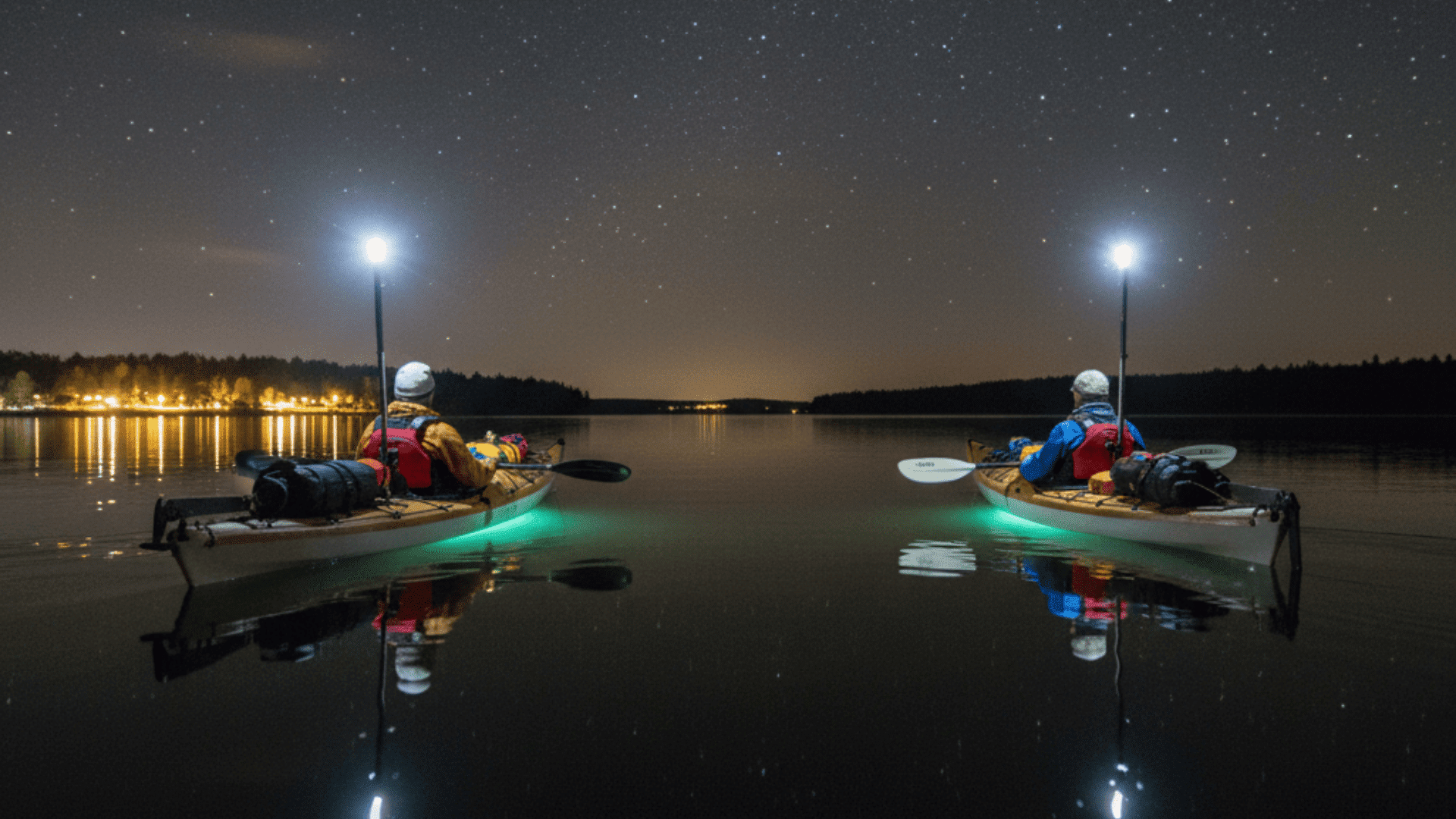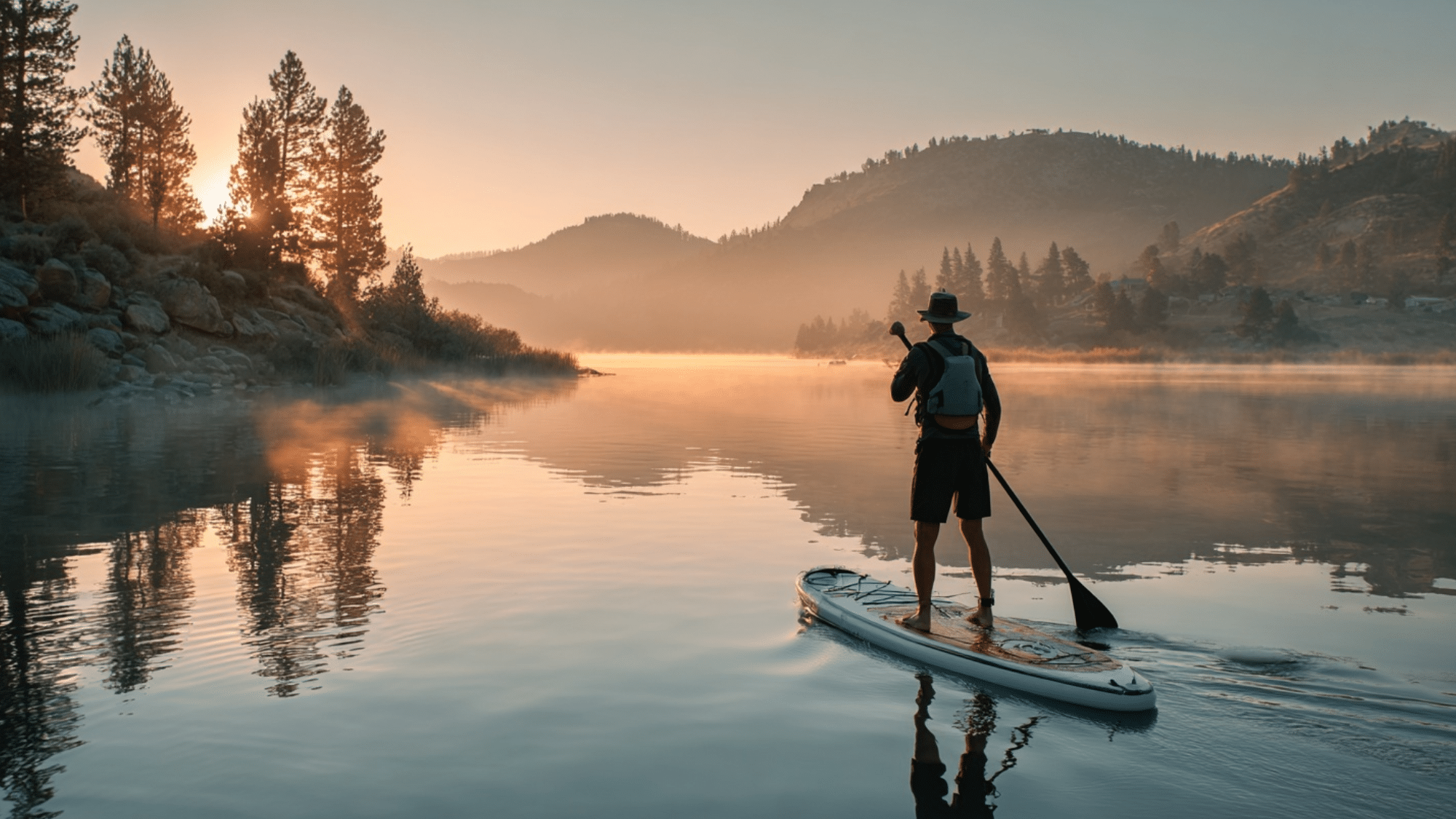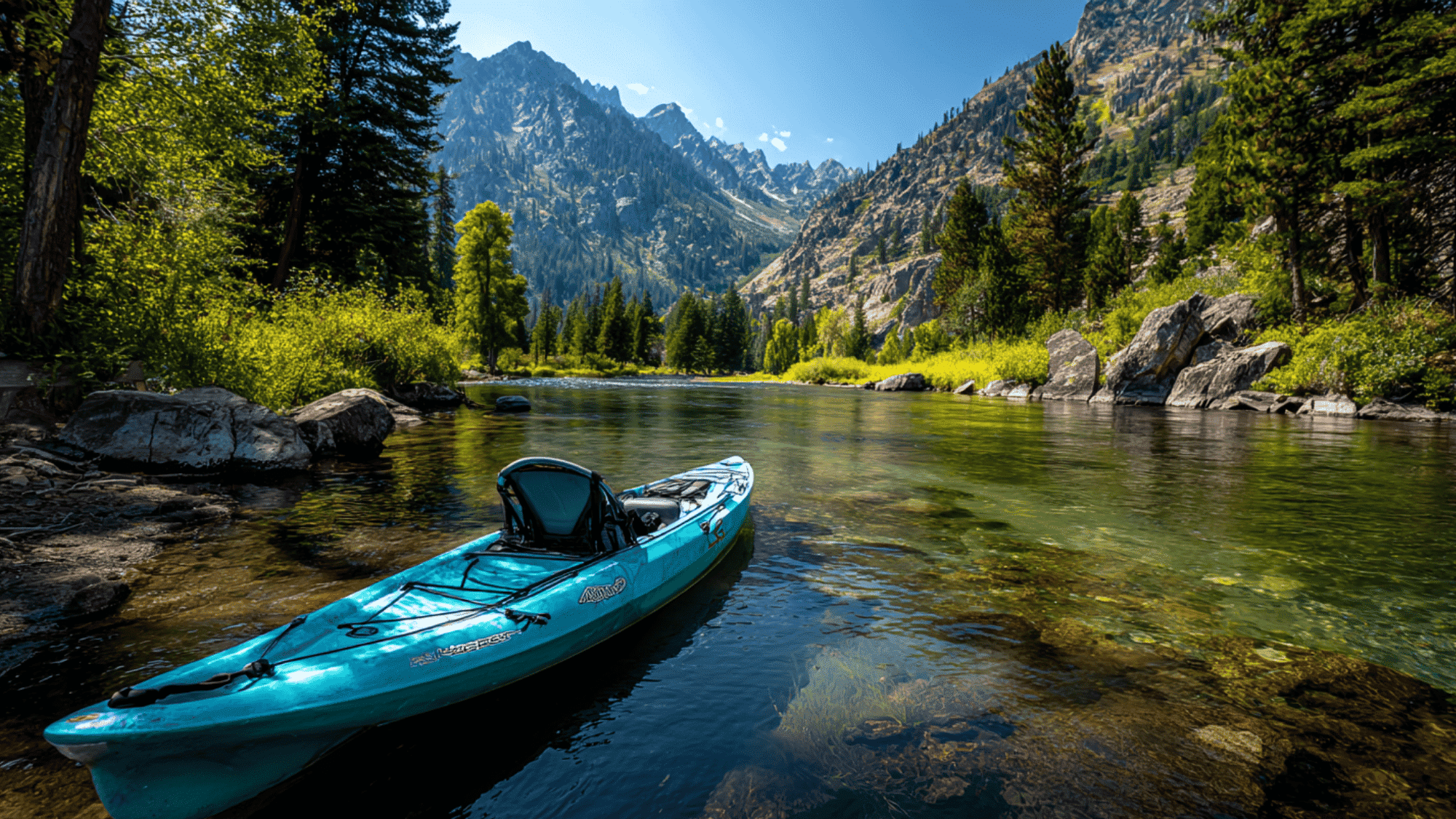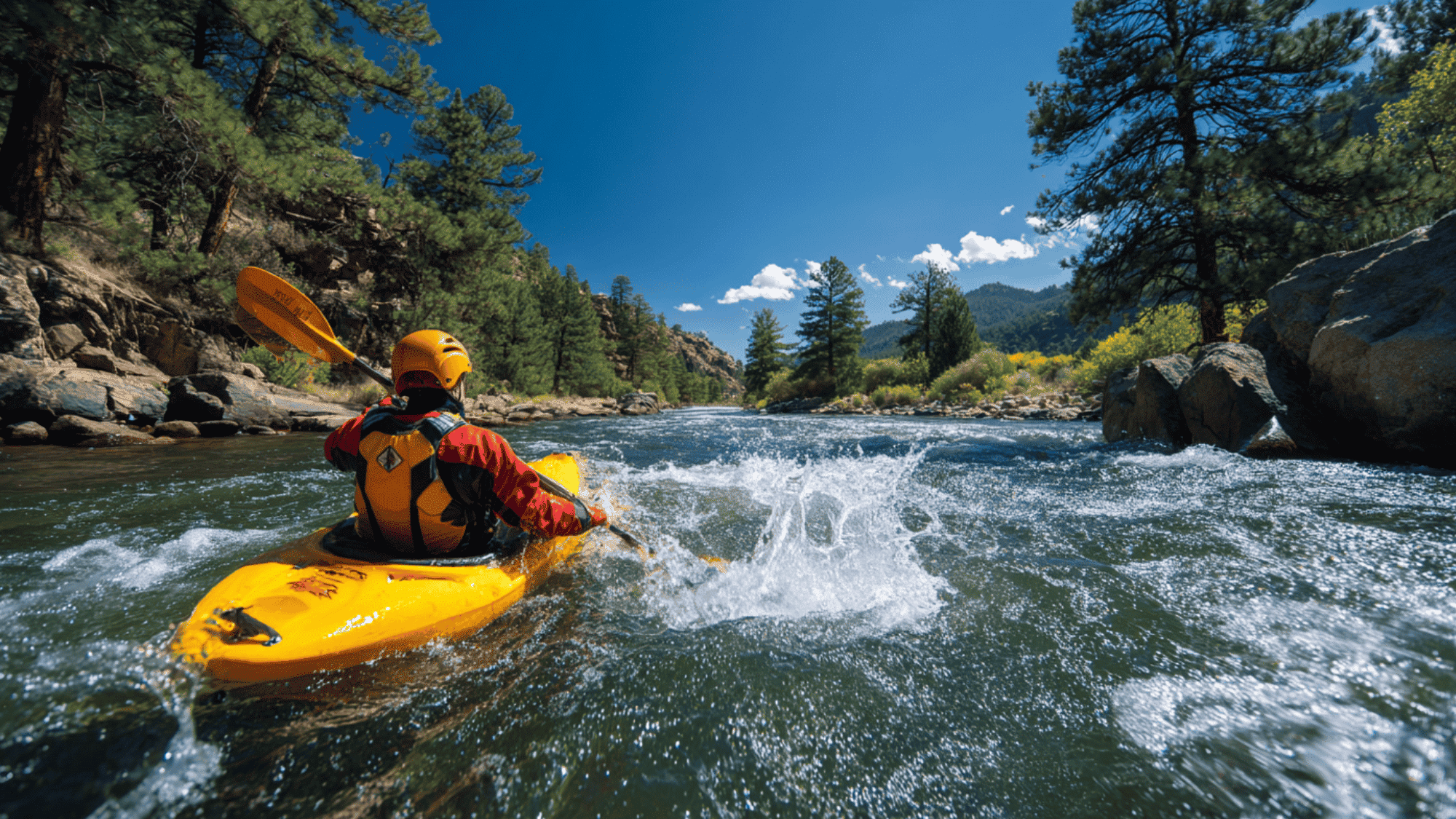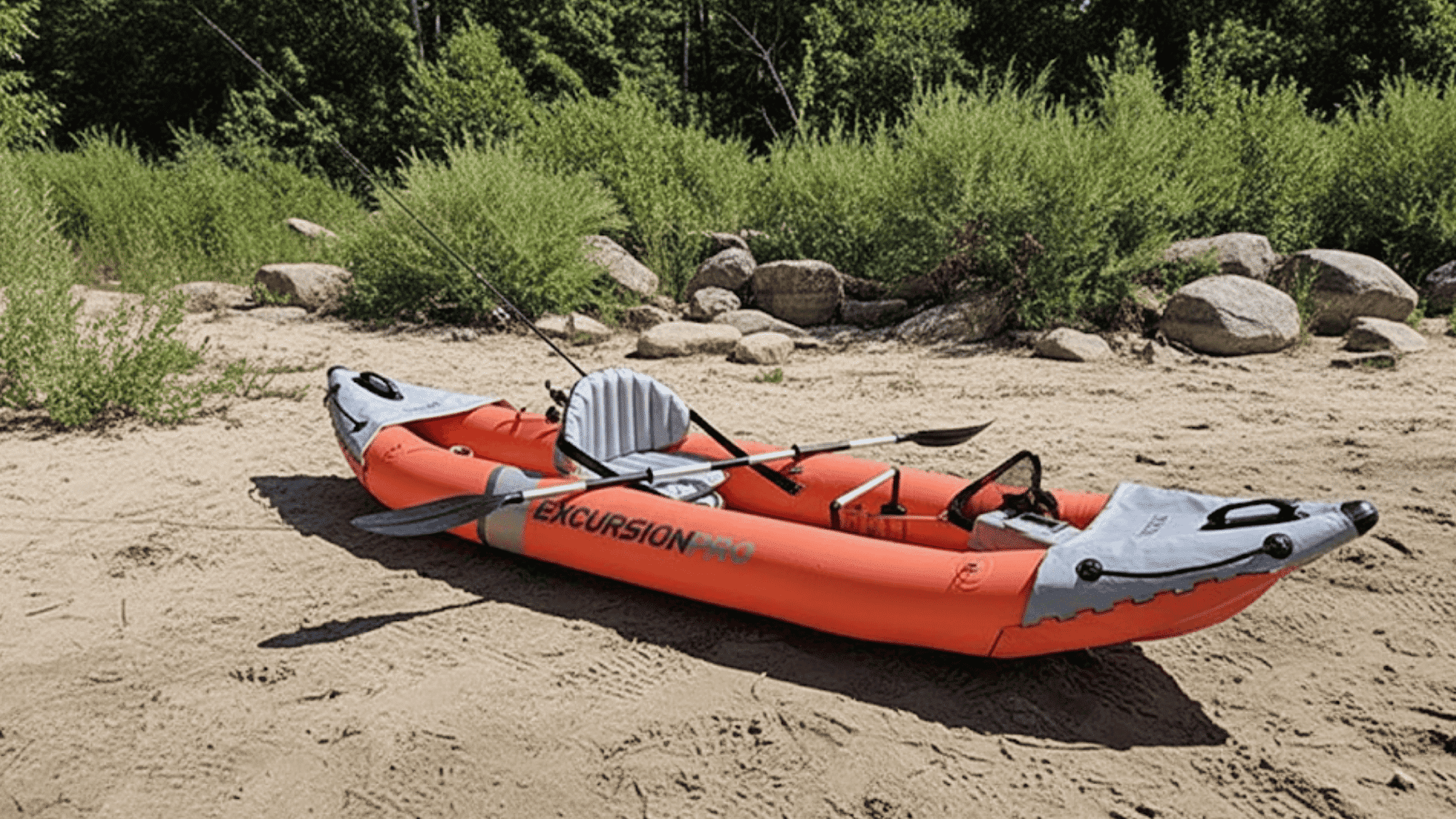You’re gliding silently through mirror-like water when suddenly a massive chunk of glacier crashes into the sea just 100 yards away.
This is Alaska kayaking – where every stroke of your paddle takes you deeper into some of the wildest, most stunning scenery on the planet.
Alaska’s waters offer heart-pounding adventures and peaceful moments that will leave you speechless.
From glass-smooth alpine lakes reflecting snow-covered peaks to dramatic ocean fjords where whales surface nearby, Alaska delivers kayaking experiences you’ll never forget.
Here are the best tour companies, the most incredible places to paddle, and everything you need to know to make your Alaska kayaking adventure safe and unforgettable.
Guided Tours vs. Going on Your Own
When planning your Alaska kayaking adventure, you’ll need to decide between joining a guided tour or exploring on your own. Each option has benefits and drawbacks.
Guided tours are perfect for most people because Alaska’s waters can be challenging and unpredictable.
Professional guides are knowledgeable about local conditions, weather patterns, and wildlife behavior. They provide all the safety equipment and handle the logistics.
Additionally, they share fascinating stories about Alaska’s history and its natural wonders.
Self-guided trips are best suited for experienced kayakers who are comfortable in cold water and changing weather conditions. You’ll need advanced skills and your own gear.
Most beginners should stick with guided tours for safety reasons.
The wilderness here is vast and remote. Cell phone service is limited, and the weather can change quickly. Having an experienced guide makes your trip safer and more enjoyable.
Top Alaska Kayak Tour Companies
Choosing the right tour operator makes all the difference in your Alaska adventure. Here are some of the best companies offering kayak tours:
- Pangaea Adventures operates in Valdez and Prince William Sound. They’re known for their glacier kayaking tours and excellent safety record. Their guides are passionate about marine biology and local history.
- Spirit Walker Expeditionsspecializes in Glacier Bay National Park tours. They offer multi-day camping trips that get you deep into pristine wilderness. Their small group sizes mean more personal attention.
- Kayak Adventures Worldwideruns tours from Seward into Kenai Fjords National Park. They’re great for day trips and have good beginner programs. You might see whales, sea otters, and puffins on their tours.
- Alaska Kayak Company operates from Ketchikan, exploring the famous Misty Fjords. Their tours combine kayaking with wildlife watching and cultural experiences.
Many other quality operators work throughout Alaska. The Alaska.org network connects you with local providers who know their areas best.
Best Places to Kayak in Alaska
Alaska offers an incredible variety of kayaking destinations. You can choose between ocean paddling and peaceful lake adventures.
Coastal and Sea Kayaking Spots
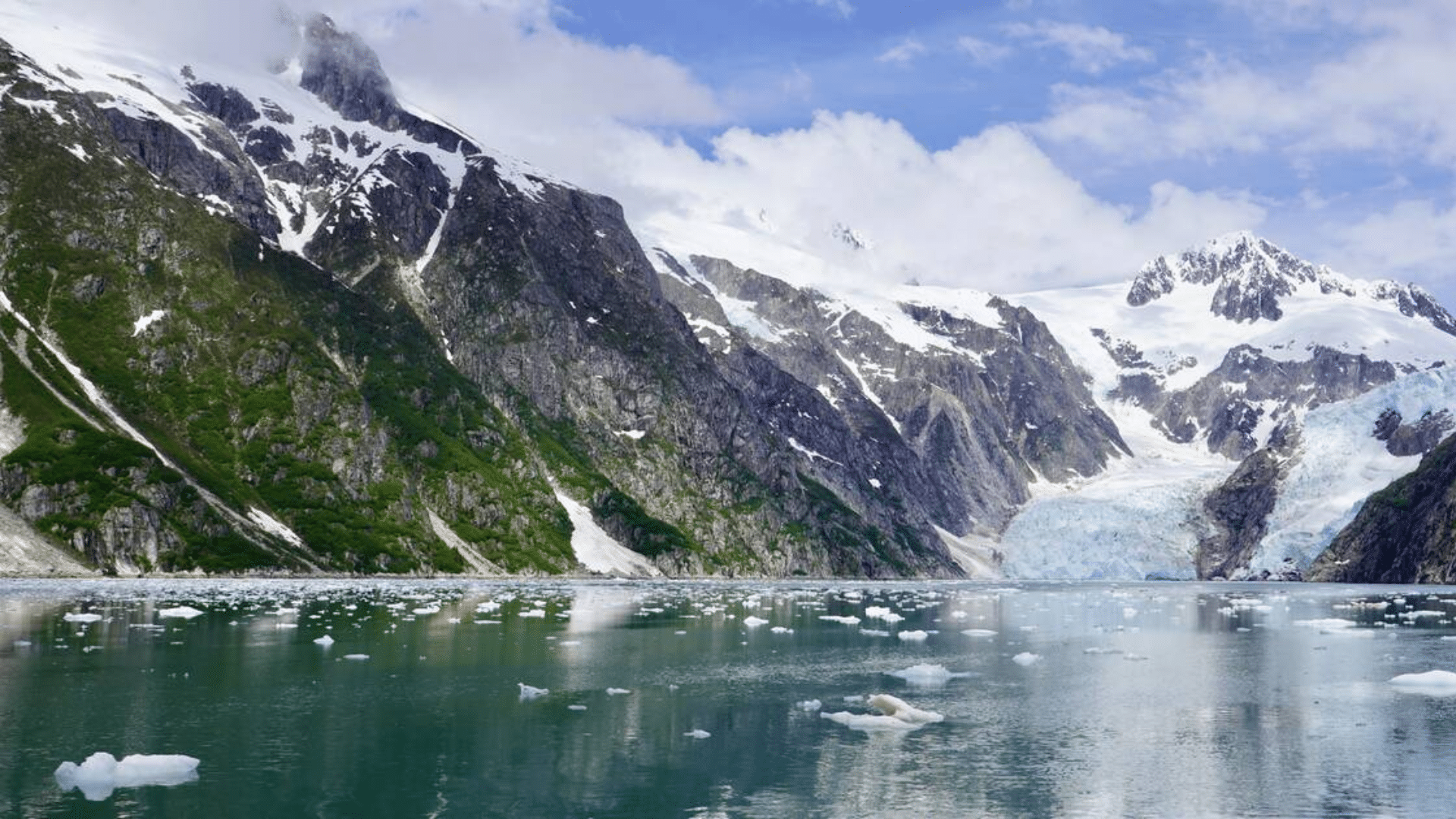
Alaska’s coastline offers world-class sea kayaking with glaciers, wildlife, and protected waters.
- Kenai Fjords National Park is Alaska’s most popular kayaking destination. Aialik Bay and Resurrection Bay offer glacier views and abundant wildlife. You might paddle alongside whales, seals, and sea otters.
- Prince William Sound provides some of Alaska’s most dramatic scenery. Columbia Bay takes you close to massive tidewater glaciers. Shoup Glacier near Valdez is another favorite spot where you can hear glaciers cracking and crashing into the sea.
- Glacier Bay National Park is a UNESCO World Heritage Site with incredible glacier viewing. This protected wilderness requires permits, so book tours well in advance.
- Misty Fjords and the Inside Passage near Ketchikan feature towering cliffs, waterfalls, and protected waters. The scenery here inspired many Native American legends.
Inland Lakes and Rivers
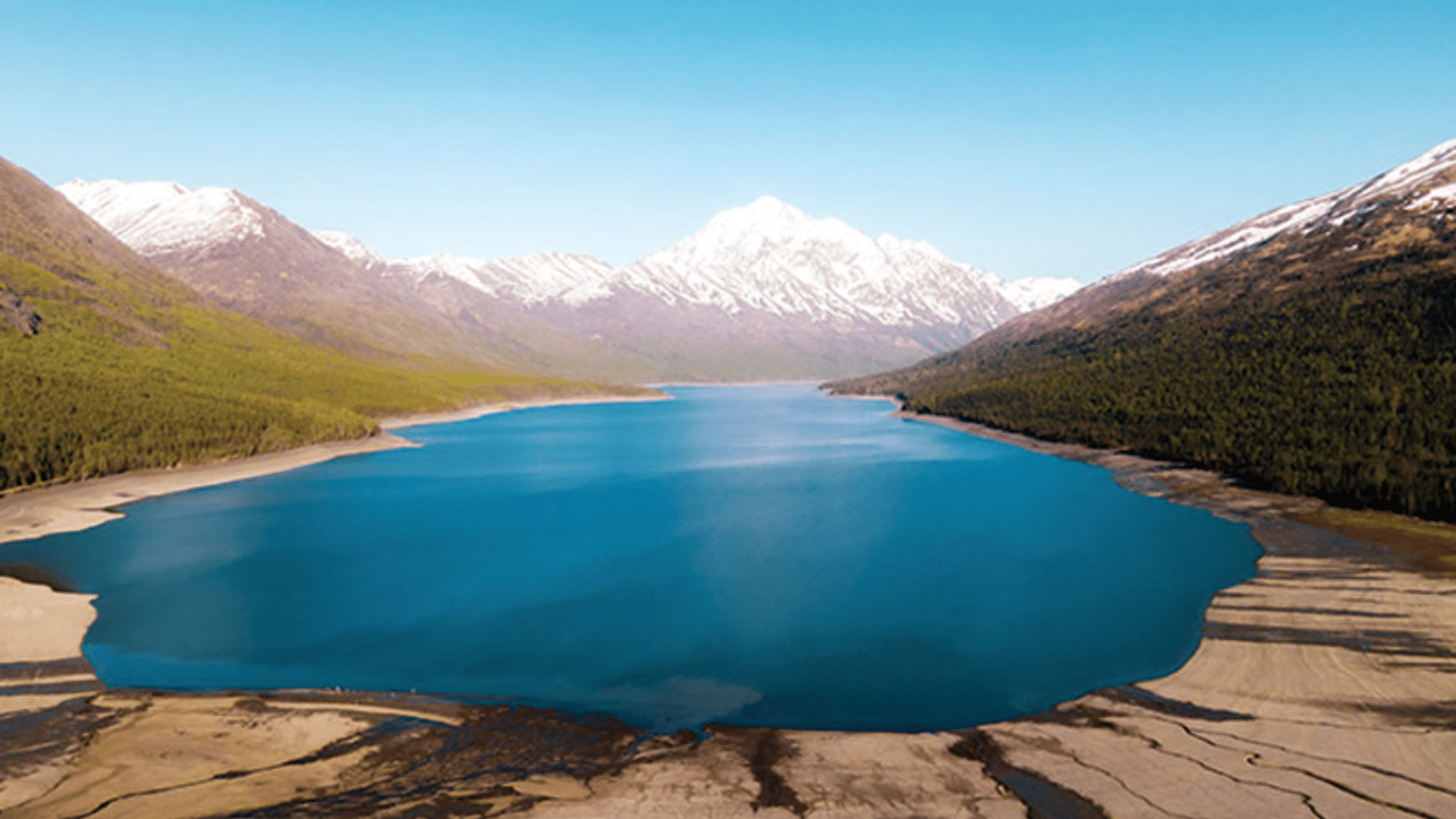
Freshwater kayaking provides calmer conditions and stunning mountain reflections.
- Eklutna Lake sits just 30 minutes from Anchorage, making it perfect for day trips. The turquoise water reflects the surrounding mountains beautifully. It’s also great for beginners since there are no ocean currents or tides.
- Byers Lake in Denali State Park offers incredible views of North America’s tallest peak. The calm waters are perfect for photography and wildlife watching.
- The Yukon River provides multi-day wilderness paddling for experienced kayakers. This historic waterway flows through incredible wilderness, but it requires serious preparation and skills.
- Nenana River near Denali National Park offers whitewater excitement for advanced paddlers. The rapids here are challenging and require expert guidance.
Special Glacial Spots
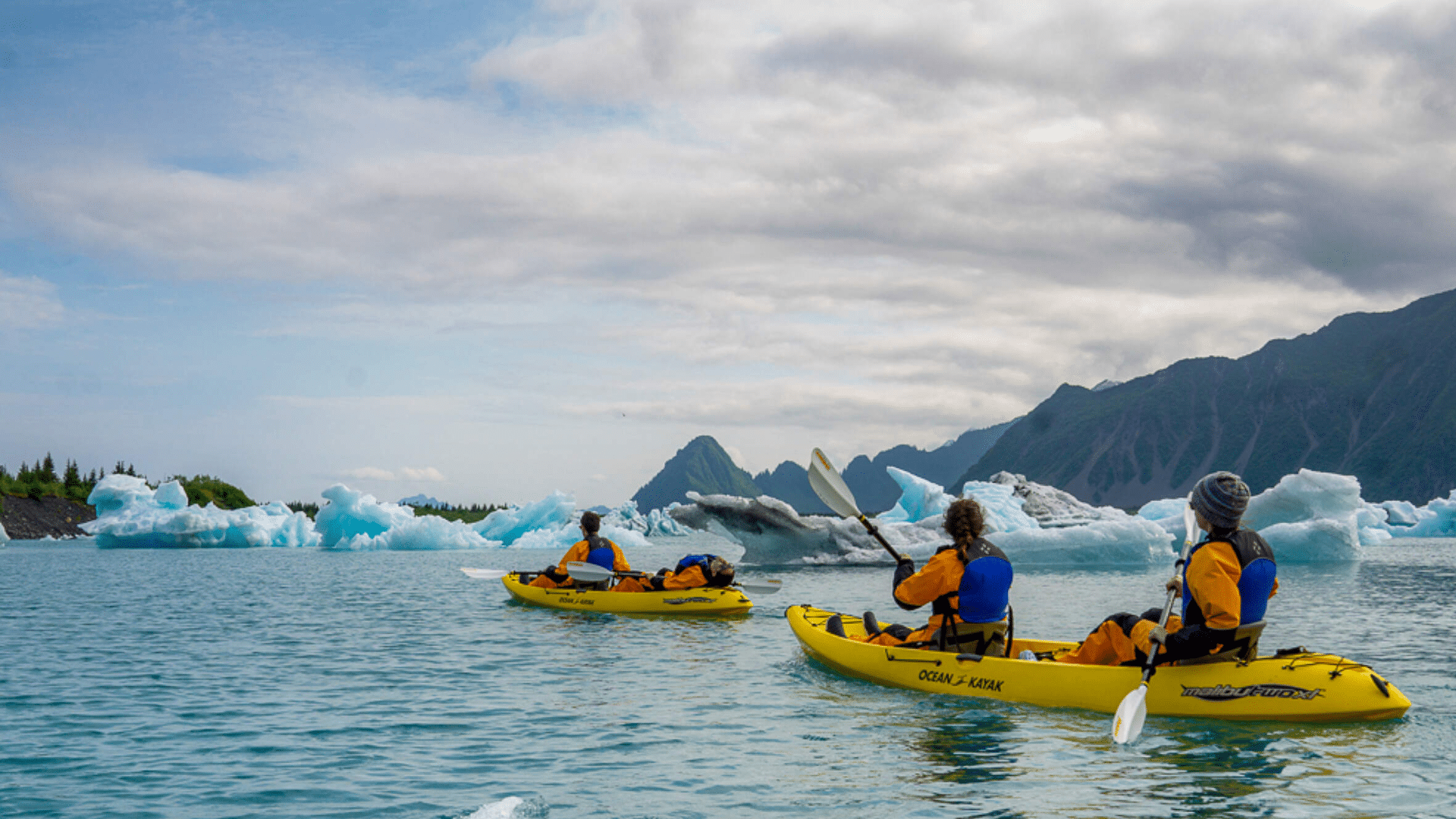
These unique destinations let you paddle among icebergs and glacial formations.
- Bear Glacier Lagoon lets you paddle among icebergs that have broken off from the glacier. The bright blue ice creates an otherworldly experience.
- Spencer Glacier Lake is accessible by Alaska Railroad, making it a unique day trip option from Anchorage. You’ll take the train through stunning mountain scenery to reach this remote lake.
When to Visit Alaska for Kayaking
The best kayaking season runs from June through September, with each month offering unique advantages.
| Month | Weather | Daylight | Wildlife | Crowds | Best For |
|---|---|---|---|---|---|
| June | Cool, unpredictable | Up to 19 hours | Wildflowers, early marine life | Lower | Long days, fewer people |
| July | Warmest, most stable | 18+ hours | Peak whale watching | Highest | Best weather, family trips |
| August | Warm, stable | 16+ hours | Active wildlife, salmon runs | High | Reliable conditions |
| September | Variable, cooler | 14 hours | Fall colors, northern lights | Lower | Autumn beauty, fewer crowds |
Water temperatures stay cold year-round (around 40-50°F), so proper clothing is essential regardless of when you visit.
How to Prepare for Your Alaska Kayaking Adventure
Proper preparation is your ticket to a safe and incredible Alaska kayaking adventure.
Master the art of layering with moisture-wicking base layers, insulating fleece or wool, and waterproof outer shells – cotton is your enemy in these cold waters.
Most tour operators provide dry suits and safety gear like PFDs and whistles, but always double-check what’s included.
Pack extra clothes in waterproof bags along with snacks, sunscreen, and sunglasses for glacier glare.
Learn cold-water self-rescue techniques before you go, and respect Alaska’s wildlife by keeping proper distances from curious seals and shoreline bears.
Smart preparation transforms potential challenges into pure adventure.
Planning Your Alaska Kayaking Itinerary
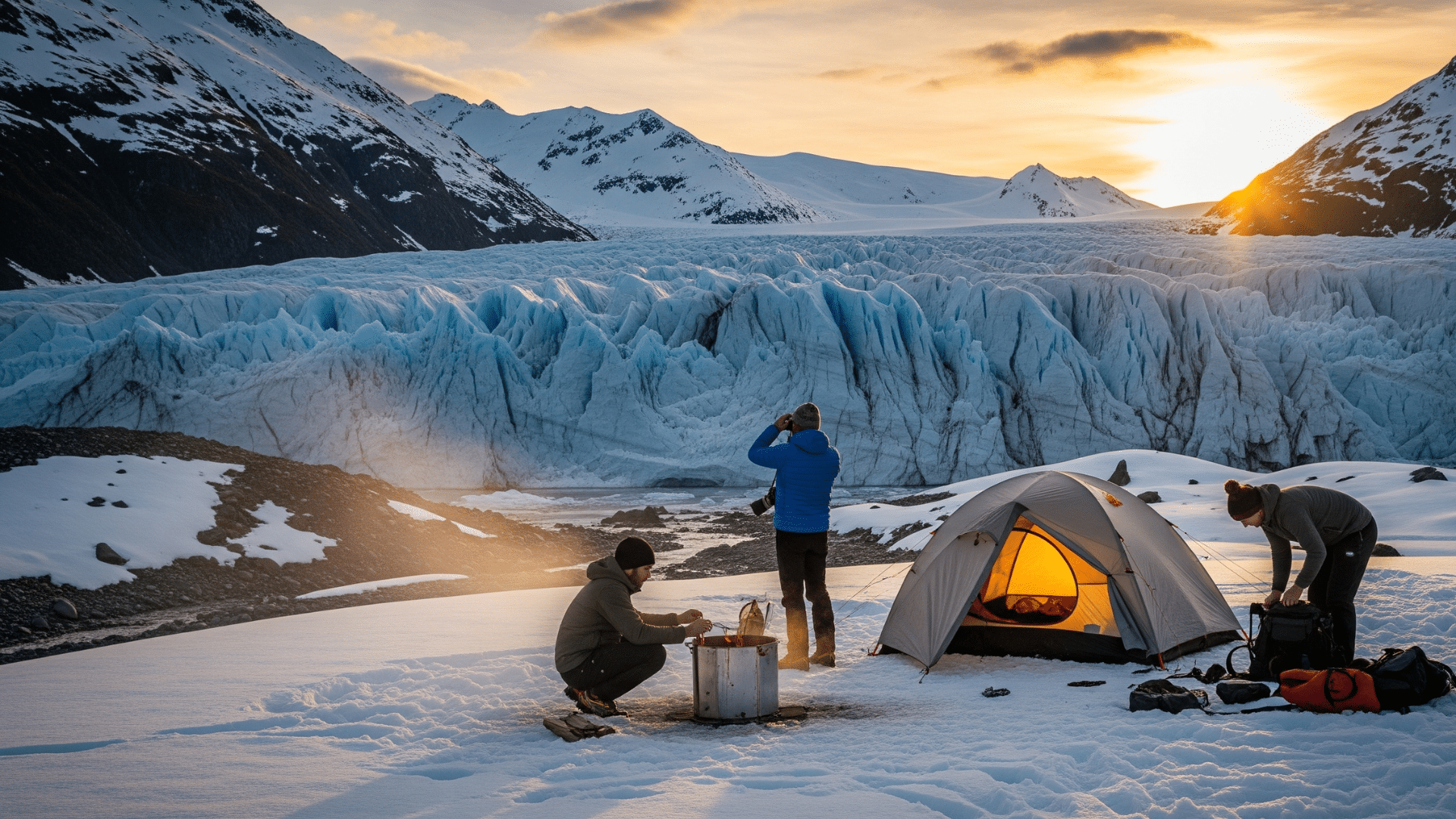
Your itinerary depends on your experience level, time available, and interests. Here are some popular options:
1. Day Trips (1-2 Days)
Half-day tours work great for beginners or families with young kids. Many operate from Seward, Valdez, or near Anchorage. You’ll get a taste of Alaska kayaking without a big-time commitment.
Full-day adventures let you reach more remote areas and see more wildlife. These often include lunch on a remote beach and multiple paddling locations.
2. Multi-Day Trips (3-5 Days)
Camping expeditions take you deep into wilderness areas like Glacier Bay. You’ll sleep in tents on remote beaches and wake up to incredible views. These trips require more physical fitness but offer unforgettable experiences.
Mothership tours let you paddle during the day and sleep comfortably on a boat at night. This combines adventure with comfort and works well for mixed skill groups.
3. Extended Expeditions (7+ Days)
For serious kayakers seeking the ultimate Alaska wilderness experience in remote locations.
Wilderness expeditions explore remote areas that few people ever see. These require significant kayaking experience and physical fitness. The Yukon River and outer coast expeditions fall into this category.
Sample 5-day itinerary: Start in Seward for Kenai Fjords sea kayaking (2 days), travel to Anchorage for Eklutna Lake paddling (1 day), then take the Alaska Railroad to Spencer Glacier Lake (1 day). This combines coastal and inland experiences.
What to Expect: Costs and Budgeting
Alaska kayaking costs vary widely depending on trip length and inclusions.
| Trip Type | Cost Per Person | What’s Included | Duration |
|---|---|---|---|
| Half-day tours | $100-200 | Basic instruction, gear, and guide services | 3-4 hours |
| Full-day trips | $200-400 | Instruction, gear, guide, and often lunch | 6-8 hours |
| Multi-day tours | $300-600/day | Meals, camping gear, all activities, and a guide | 3-7+ days |
Additional Costs to Budget For
- Transportation to Alaska and between towns
- Meals not included in tours
- Personal gear purchases
- Guide tips (10-15% standard)
- Travel insurance
Money-Saving Tips
- Book early for better rates
- Consider shoulder season trips (June/September)
- Look for package deals including transportation and lodging
Make Your Alaska Kayaking Dream Come True
Alaska offers kayaking adventures unlike anywhere else on Earth. From paddling among icebergs to watching whales surface nearby, these experiences create memories that last a lifetime.
The key to a successful Alaska kayaking trip is choosing reputable operators, preparing properly for cold-water conditions, and respecting the incredible wilderness you’ll find.
If you spend a day on calm lake waters or a week camping on remote beaches, Alaska will exceed your expectations.
Start planning your adventure now by researching tour operators and deciding which type of experience appeals to you most.
Book early for the best selection, and prepare for an unforgettable journey through one of the world’s last great wilderness areas. Alaska’s pristine waters are waiting for you to explore them.
Frequently Asked Questions
Can Beginners Kayak in Alaska?
Yes! Many tour operators offer beginner-friendly trips with instruction and calm water locations. Start with shorter, guided tours to build confidence.
Do I Need Special Permits?
Some areas, like Glacier Bay, require permits, but your tour operator typically handles these. Self-guided trips may need additional permits.
What if Weather Conditions Change?
Reputable operators prioritize safety and may modify or cancel trips in dangerous conditions. This is for your protection, even if it’s disappointing.

